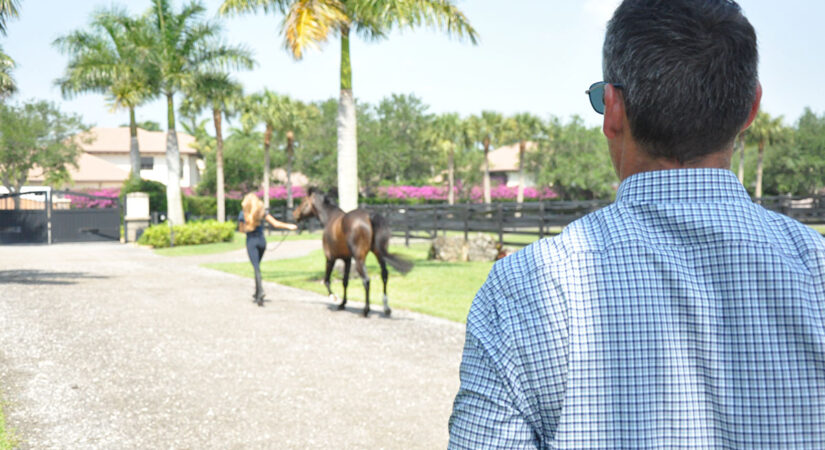By Kara Pinato Scro
Imagine you are in the process of finding and purchasing your dream horse. You’ve taken the time to try different horses, maybe you’ve had this horse on trial for some time and you know it’s the right one for you. You are satisfied with the results of the pre-purchase exam and, at last, funds are transferred from your account to the seller and this special horse is officially yours! It is an exciting new adventure until you go to insure your horse and learn that your trusty new steed already had a prior “loss of use” claim filed for it and could no longer be insured. What happens now?
We spoke with Laura Connaway, founder and president of Connaway & Associates Equine Insurance Services, Inc., to clarify how these claims are made and paid, and Armand Leone, Jr., of Leone Equestrian Law, to give perspective on actionable steps one can take should you find yourself in this situation.
Filing Loss of Use Claims
First, let’s define “loss of use.” According to Connaway, there are two types of “loss of use” claims that can be made: Full Loss of Use (FLOU) and Accidental/External Loss of Use (ALOU).
“FLOU reimburses you a percentage of your horse’s insured value—typically 50%—if the horse becomes permanently unable to perform its intended use to due to an incident such as lameness or injury during the policy period,” shared Connaway. “The horse must be considered permanently unable to perform in its intended discipline by the horse owner’s veterinarian. Once this is determined, the insurance carrier has the right to enlist a veterinarian of their choosing to examine the horse. If the veterinarians do not agree, a third veterinarian that is acceptable to the two previous veterinarians will examine the horse and their opinion will stand. Internal issues—which affect the interior of the horse such as a ligament—and exterior issues—which are visible on the exterior of the horse such as a laceration—are considered.
“Similarly, ALOU reimburses a percentage of your horse’s insured value—also typically 50%—if the horse becomes permanently unable to perform its intended use due to a visible, external, accidental, or violent means injury,” continued Connaway. “The difference in this claim, however, is that the injury is a result of an external, visible, or violent-means injury—such as a trailer accident or crashing through a fence—that causes lacerations that result in permanent lameness. The process of determination is the same as with FLOU, but only external issues are considered.”
As an insurance agency, Connaway’s team works with many different A-rated insurance carriers to help customers find the carrier and insurance policy that best suits their needs. Connaway notes that insuring guidelines vary from insurance company to insurance company and that each entity will follow its own guidelines when reviewing a horse’s risks to determine coverage acceptance.
“When our agency insures a new horse for a customer, we are insuring ‘pending company acceptance,’” said Connaway explaining that the buyer can submit an application and health form to an individual insurance carrier prior to the purchase to see if the horse they are considering has a record of claims with that particular carrier. The horse should be under contract for purchase so that the potential buyer has an insurable interest prior to submitting the application to the insurance carrier for review.
“As a step in the insuring process, each insurance carrier has the right to review its internal database and search for the horse being insured,” she continued. “The carrier may then elect to add exclusions to the policy for pre-existing conditions based on the carrier’s knowledge of previous claims that have been paid. The carrier also has the right to decline to provide coverage.”
In short, if an FLOU or ALOU claim had previously been paid on a horse, when the new owner goes to insure the horse, they may find that an insurance carrier adds exclusions on their policy or that the insurance carrier denies coverage entirely.
Taking Legal Action
If you find yourself unable to insure a horse after the sale is complete, there is no doubt it may leave you wondering what to do next.
According to Leone, if the buyer was aware that the horse currently has or previously had a medical condition or had sustained an injury that could lead to a loss of use claim, it should not come as a surprise that an insurance carrier would place restrictions on coverage or that a carrier would deny coverage altogether.
On the other hand, there may be cause for legal action if the buyer was unaware of a horse’s medical condition or injury. “If the seller failed to share that the horse had a medical condition or had previously sustained an injury, a claim for misrepresentation could filed by the buyer as the seller failed to disclose a material fact relevant to the purchase,” Leone explained.
If you find the horse was misrepresented, the decision to proceed with legal action may seem like the best path forward, but it can become a slippery slope, according to Leone. “It’s important to consider the assumed value of the horse and whether or not the legal fees—and the time involved to litigate—are worth it,” he said. “In some cases, the legal fees will be more costly than the value of the horse or the damages you hope to recover. However, if the horse is worth insuring, it is likely worth the litigation.”
While the seller and the veterinarian performing the pre-purchase exam are obligated to disclose relevant physical and medical information that may impact a horse’s ability to do its intended job, it goes without saying that a buyer should always do their homework before the transaction is complete.
Doing Due Diligence Ahead of the Sale
Leone suggests trying to avoid using the seller’s veterinarian to perform the pre-purchase exam. “Using your own veterinarian will help ensure that the examination and evaluation are being performed by an independent professional with no pre-existing loyalty to the seller,” he shared. “If your veterinarian cannot perform the examination, try to retain a well-qualified veterinarian that is familiar with the breed, sport, or use for which the horse is being purchased. Providing the veterinarian with the horse’s intended use can be extremely helpful in terms of the information you can gain from the examination. It is vital to know whether the horse you want to purchase will be suitable to meet your needs.” For example, a veterinarian might find that a horse is not suitable to consistently jump in the grand prix ring but would be very capable to occasionally jump around children’s or adult jumper courses.
Equally important is to ask for the horse’s veterinarian records for as far back as reasonably available. Make sure your examining veterinarian has a chance to review them as part of her pre-purchase exam. You should also look at the horse’s show record to see what divisions the horse competed in, how the horse performed, how strenuous his showing has been, and if there are any significant lapses in competition attendance that may signal a prior injury. If you don’t ask, you may not find out until it is too late and money has been transferred.
While there is inherent risk in almost anything we do with horses, when it comes to insuring new horses, being knowledgeable about the process—particularly before the sale is complete—will go a long way in ensuring there are no surprises. That said, we can’t always have the answers. Working with a veterinarian you trust in combination with consulting a reputable insurance agency that can help you navigate the unknowns that crop up can help ease concerns and make for a more seamless experience in the end.
This article originally ran on April 21, 2022, on The Plaid Horse.

